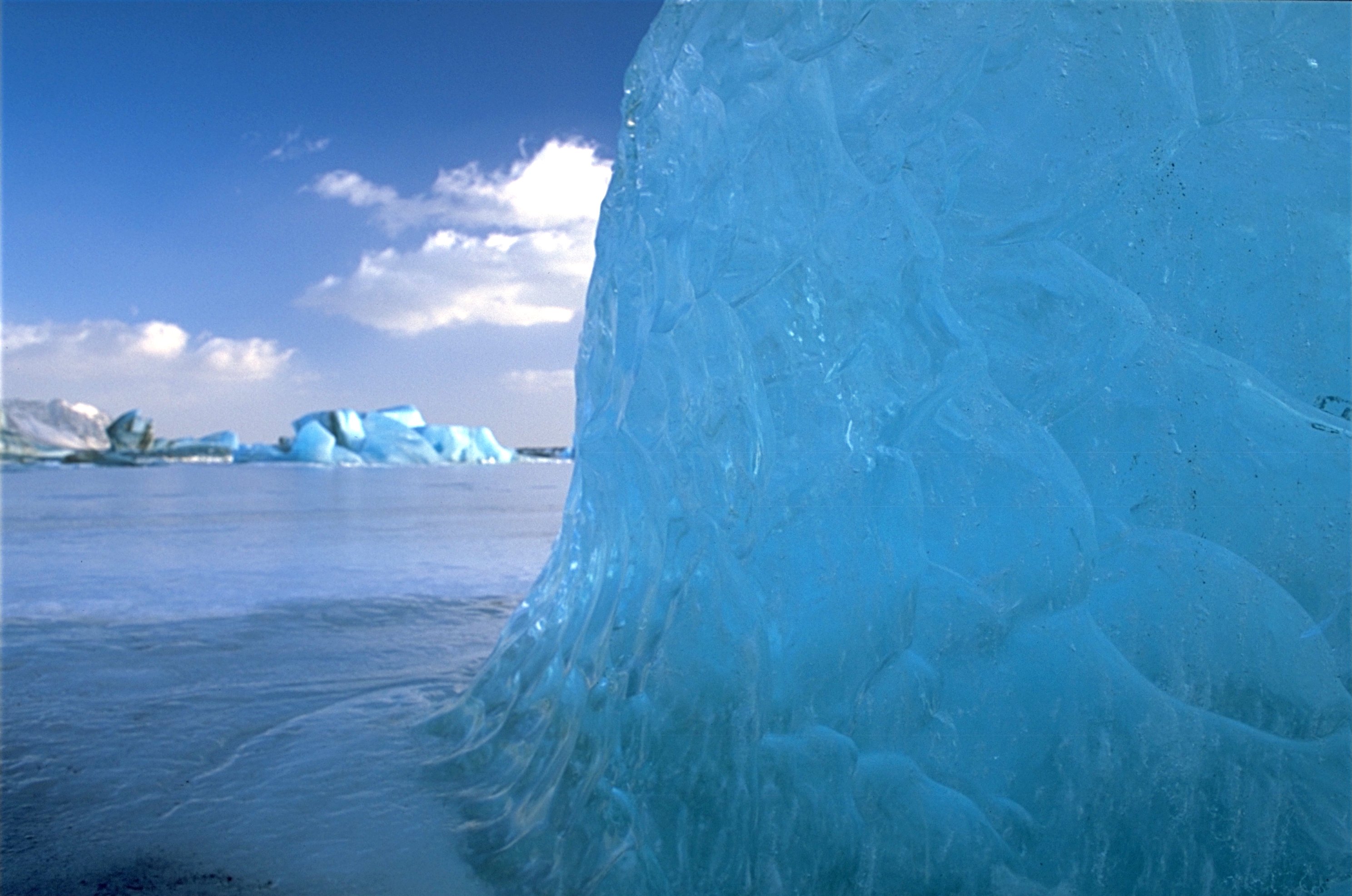Blue ice (glacial) on:
[Wikipedia]
[Google]
[Amazon]
__NOTOC__
 Blue ice occurs when
Blue ice occurs when
 Blue ice is exposed in areas of the
Blue ice is exposed in areas of the
Glaciology of Blue Ice Areas in Antarctica
* {{glaciers Bodies of ice Glaciology
 Blue ice occurs when
Blue ice occurs when snow
Snow comprises individual ice crystals that grow while suspended in the atmosphere—usually within clouds—and then fall, accumulating on the ground where they undergo further changes.
It consists of frozen crystalline water throughou ...
falls on a glacier
A glacier (; ) is a persistent body of dense ice that is constantly moving under its own weight. A glacier forms where the accumulation of snow exceeds its ablation over many years, often centuries. It acquires distinguishing features, such a ...
, is compressed, and becomes part of the glacier. During compression, air bubbles are squeezed out, so ice crystals
A crystal or crystalline solid is a solid material whose constituents (such as atoms, molecules, or ions) are arranged in a highly ordered microscopic structure, forming a crystal lattice that extends in all directions. In addition, macros ...
enlarge. This enlargement is responsible for the ice's blue colour.
Small amounts of regular ice appear to be white because of air bubbles inside and also because small quantities of water appear to be colourless. In glaciers, the pressure causes the air bubbles to be squeezed out, increasing the density of the created ice. Large quantities of water are blue, as it absorbs other colours more efficiently than blue. A large piece of compressed ice, or a glacier, similarly appears blue.
The blue color is sometimes wrongly attributed to Rayleigh scattering
Rayleigh scattering ( ), named after the 19th-century British physicist Lord Rayleigh (John William Strutt), is the predominantly elastic scattering of light or other electromagnetic radiation by particles much smaller than the wavelength of th ...
, which is responsible for the color of the sky. Rather, water ice is blue for the same reason that large quantities of liquid water are blue: it is a result of an overtone
An overtone is any resonant frequency above the fundamental frequency of a sound. (An overtone may or may not be a harmonic) In other words, overtones are all pitches higher than the lowest pitch within an individual sound; the fundamental i ...
of an oxygen–hydrogen (O−H) bond stretch in water, which absorbs light at the red end of the visible spectrum. In the case of oceans or lakes, some of the light hitting the surface of water is reflected back directly, but most of it penetrates the surface, interacting with its molecules. The water molecule can vibrate in different modes when light hits it. The red, orange, yellow, and green wavelengths of light are absorbed so that the remaining light is composed of the shorter wavelengths of blue and violet. This is the main reason why the ocean
The ocean (also the sea or the world ocean) is the body of salt water that covers approximately 70.8% of the surface of Earth and contains 97% of Earth's water. An ocean can also refer to any of the large bodies of water into which the wor ...
is blue. So, water owes its intrinsic blueness to selective absorption in the red part of its visible spectrum. The absorbed photons promote transitions to high overtone and combination states of the nuclear motions of the molecule, i.e. to highly excited vibrations.
An example of blue ice was observed in Tasman Glacier, New Zealand
New Zealand ( mi, Aotearoa ) is an island country in the southwestern Pacific Ocean. It consists of two main landmasses—the North Island () and the South Island ()—and over 700 smaller islands. It is the sixth-largest island coun ...
in January 2011.
Antarctic runways
 Blue ice is exposed in areas of the
Blue ice is exposed in areas of the Antarctic
The Antarctic ( or , American English also or ; commonly ) is a polar region around Earth's South Pole, opposite the Arctic region around the North Pole. The Antarctic comprises the continent of Antarctica, the Kerguelen Plateau and othe ...
where there is no net addition or subtraction of snow
Snow comprises individual ice crystals that grow while suspended in the atmosphere—usually within clouds—and then fall, accumulating on the ground where they undergo further changes.
It consists of frozen crystalline water throughou ...
. That is, any snow that falls in that area is counteracted by sublimation or other losses. Such areas are known as blue-ice areas. These areas have been used as runway
According to the International Civil Aviation Organization (ICAO), a runway is a "defined rectangular area on a land aerodrome prepared for the landing and takeoff of aircraft". Runways may be a man-made surface (often asphalt, concrete ...
s (e.g. Wilkins Runway, Novolazarevskaya, Patriot Hills Base Camp) due to their hard surface, which is suitable for aircraft
An aircraft is a vehicle that is able to flight, fly by gaining support from the Atmosphere of Earth, air. It counters the force of gravity by using either Buoyancy, static lift or by using the Lift (force), dynamic lift of an airfoil, or in ...
fitted with wheels rather than skis
A ski is a narrow strip of semi-rigid material worn underfoot to glide over snow. Substantially longer than wide and characteristically employed in pairs, skis are attached to ski boots with ski bindings, with either a free, lockable, or partial ...
.
References
External links
Glaciology of Blue Ice Areas in Antarctica
* {{glaciers Bodies of ice Glaciology